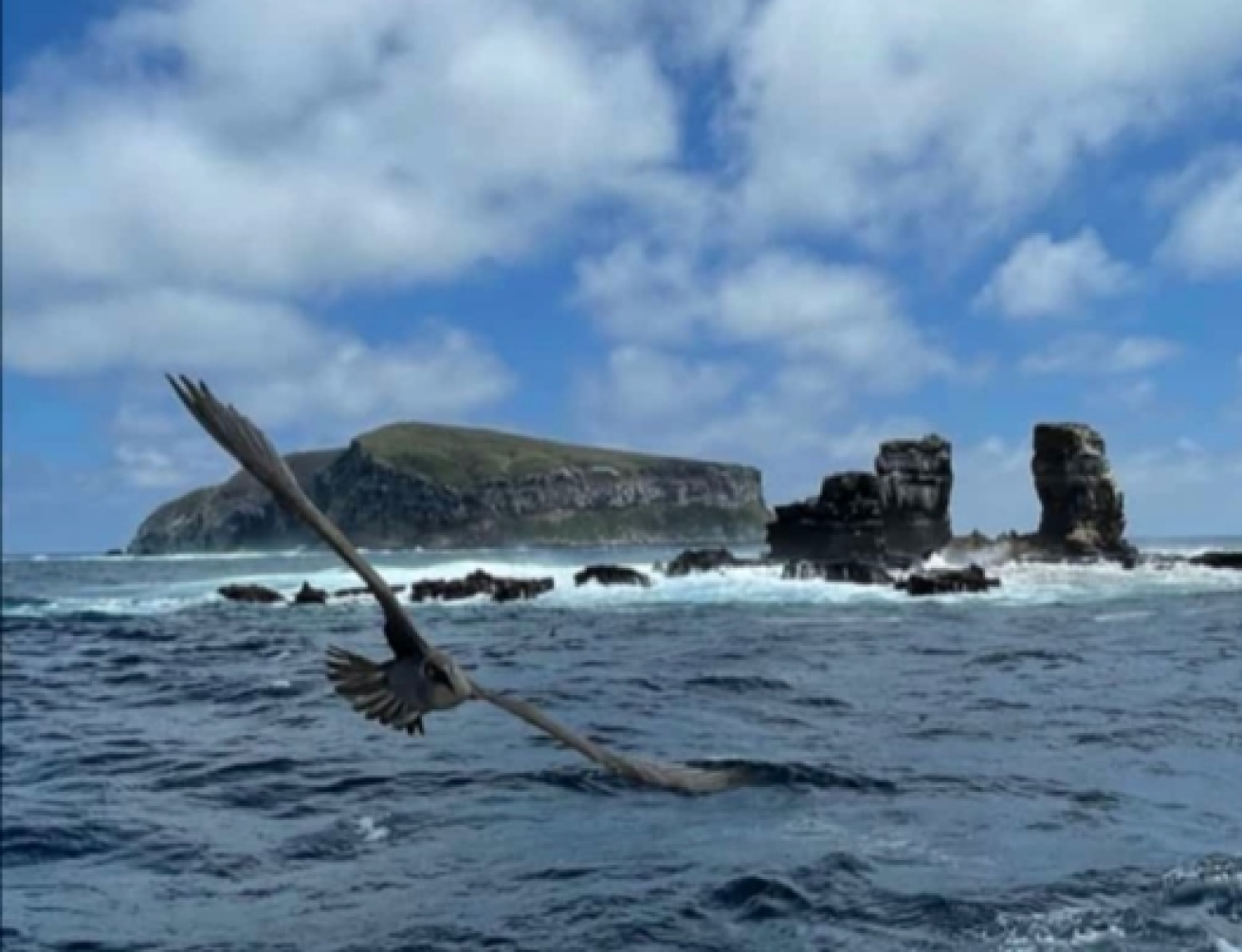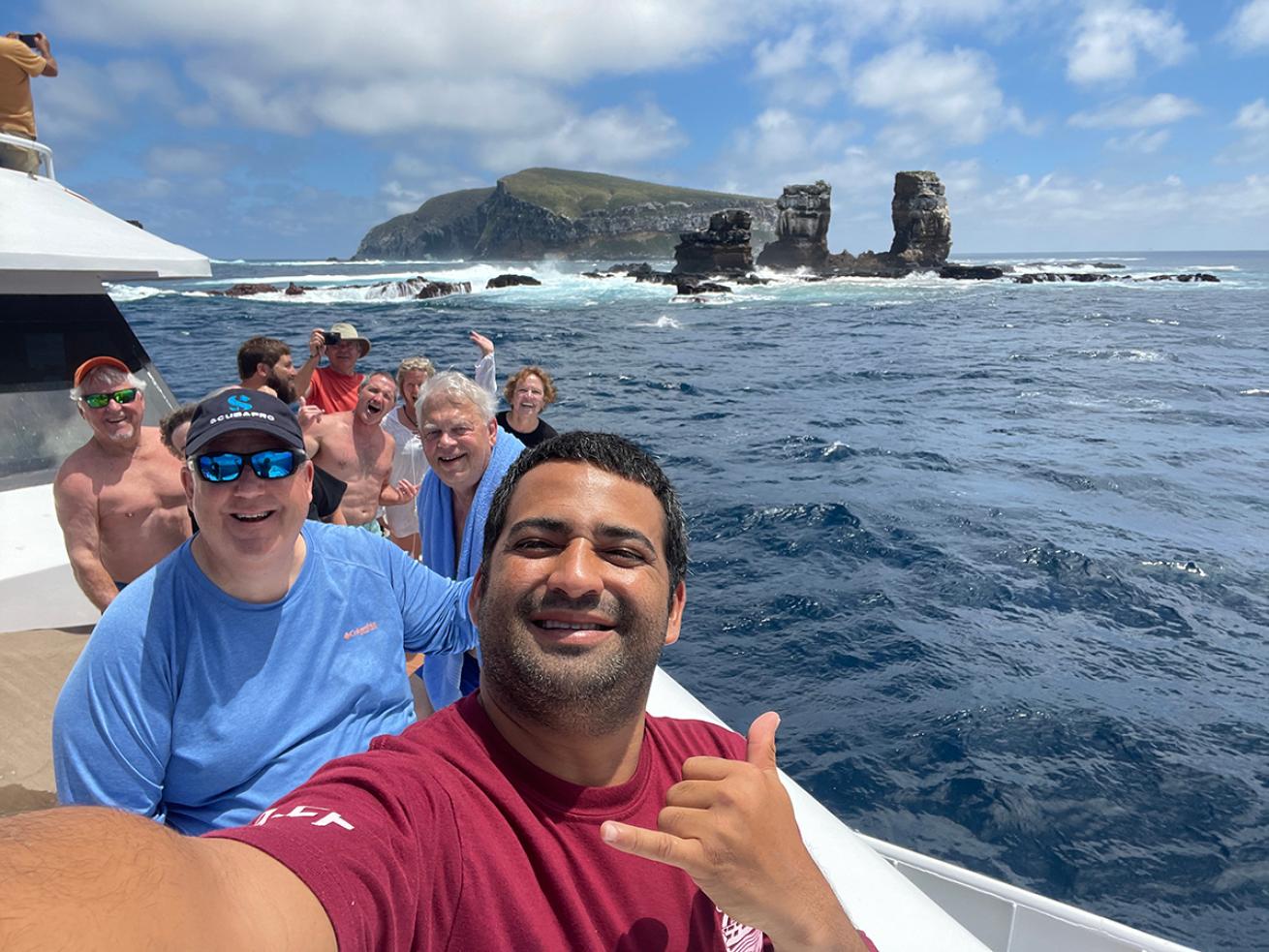Eyewitness Account of the Darwin's Arch Collapse

Courtesy Héctor BarreraNatural erosion caused the collapse, according to Ecuador's environment ministry.
When the world-famous Darwin's Arch crumbled into the sea last week, Héctor Barrera had a front row seat.
“It was actually crazy,” says the dive guide. Aboard the Aggressor Galapagos III, he and four liveaboard guests watched from the deck just before 11:30 AM as the top of the arch vanished into the sea. Too far away to hear the earth fracture and splash, they could still see it clearly.
“I was walking to the bridge,” he says, waves rolling 10 to 12 feet high, when one of the guests “saw some rocks falling down. And then we just were looking again to the arch — it was like, maximum, 10 seconds we saw the whole thing collapse. We saw brown, big rocks in the water and it was just gone.”
The north edge of the arch went first, he says, before rocks began cascading through the middle.
“The moment, for me, was really, really sad because my dream was diving with my kids, taking a picture with the arch. And then, oh — everything comes to my mind then,” he says.
No photos or video were captured of the destruction in action. Barrera, who had been holding his camera just two minutes before, cursed that he’d left it behind. He ran straight to the captain to tell him to turn the boat around. They had to get a closer look at the arch.
“I just [ran] to the bridge and I [said] to the captain, “Hey, Captain! The Darwin is gone! The Darwin is gone! Can you turn around? Can you turn around?” he asked. “They don't believe me” at first, he says. “They say: ‘Why do you say what you’re saying?’”
He implored them: “Come on, check [it] out, look around.”
The captain came out of the bridge. “And then – oh, yes, turn around, turn around, turn around!”
Looping back cut into the next dive but it’s “happening just one time [and] we are there. So why not come back?” says Barrera.

Courtesy Héctor BarreraBarrera (front and center) poses with others aboard the Aggressor Galapagos III in front of the collapsed arch.
According to Ecuador’s environment ministry, the arch collapsed due to natural erosion. “This event is a consequence of natural erosion,” reads an online statement. “Darwin’s Arch is made of natural stone that at one time would have been part of Darwin Island, which is not open to visits by land.”
“The collapse of the arch is a reminder of how fragile our world is,” Jen Jones, head of programs for the Galápagos Conservation Trust, tells The Guardian. “While there is little that we as humans can do to stop geological processes such as erosion, we can endeavour to protect the islands’ precious marine life.”
An arch no more, “I think now we get a new name,” said Barrera with a laugh. At least one new nickname is already circling — The Pillars of Evolution.










